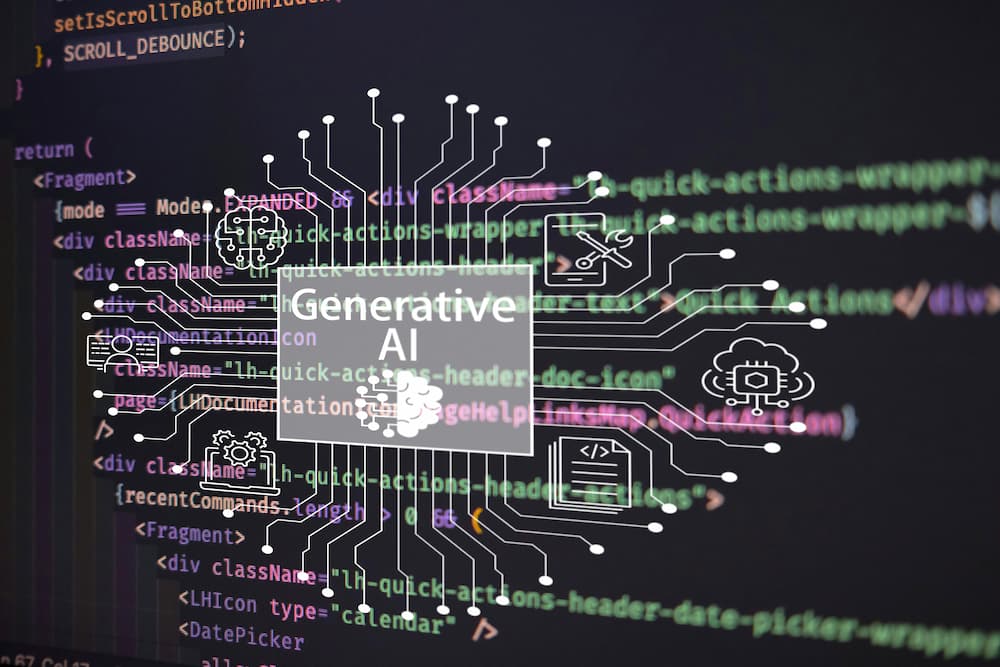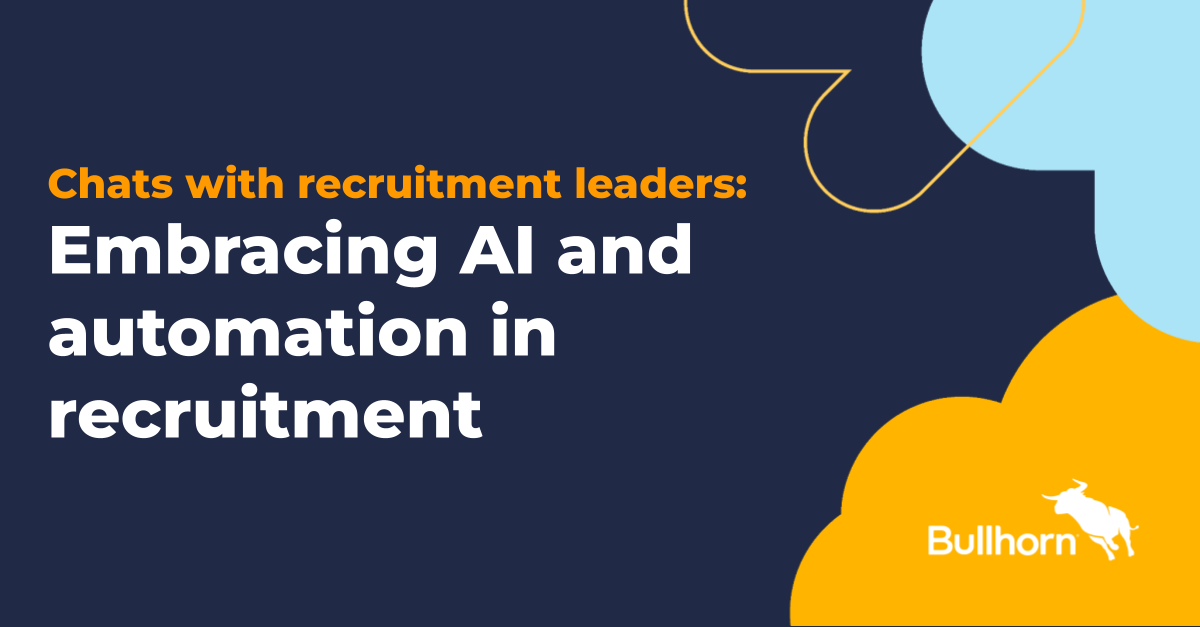Employees who collaborate with AI will be equipped to drive business value. Here’s how to future-proof your workforce with smart AI training for employees.
Generative AI has already begun reshaping how we work — from speeding up content creation and enhancing customer service to assisting with coding, recruiting, and strategic decision-making. For HR and business leaders at small- to mid-sized companies, the message is clear: AI isn’t just a futuristic concept. It’s here, and your workforce needs the skills to use it well. There’s a lot to consider, though — from what skills to learn to how AI can help, and which training methods work best in today’s evolving environment. Here’s how to future-proof your workforce with smart AI training for employees.
What AI Skills Do Employees Need?
AI tools are already enhancing performance across every function, from marketing and sales to software development and HR. Employees who know how to collaborate with AI, rather than actively resist it, will be better equipped to drive productivity, innovation, and business value.
That means AI training for employees can’t be limited to just IT teams. Your full workforce can benefit from technical and nontechnical skills to stay competitive in the age of AI.
1. Using AI-Powered Tools
The easiest entry point for most workers is learning to use AI-enhanced tools in their day-to-day work. These include:
- ChatGPT, Claude, copilot, and similar tools: For writing, brainstorming, coding assistance, and summarizing information.
- AI-assisted customer support: Chatbots that handle first-line customer queries, freeing up human agents for more complex issues.
- AI-powered recruiting platforms: Automating resume screening and candidate outreach.
- Productivity tools: AI-powered scheduling, meeting summaries, and task prioritization.
Employees should be trained not just on how to use these tools, but on when and why. Responsible use and critical evaluation of AI outputs are essential skills.
2. Technical Skills for AI Integration
For technical teams — developers, data analysts, and IT staf — AI training may go deeper:
- Prompt engineering: Crafting effective prompts to produce reliable results.
- Machine learning fundamentals: Understanding how models are trained, evaluated, and deployed.
- APIs and integration: Incorporating AI tools into company workflows and customer-facing products.
- Data management and ethics: Knowing how to handle data responsibly and mitigate algorithmic bias.
3. Soft Skills for the AI Era
Even in a highly automated environment, soft skills are more important than ever. These include:
- Critical thinking: Evaluating AI-generated outputs and making informed decisions.
- Communication and collaboration: Working across teams and functions to apply AI meaningfully.
- Adaptability and experimentation: Being open to trying new tools and processes as the AI landscape evolves.
- Ethical reasoning: Considering fairness, transparency, and privacy in the use of AI.
Your new skilling, reskilling, and upskilling initiatives should take a whole-person approach, helping employees build confidence to interact with AI while keeping the human touch that technology can’t replicate.
How AI Can Enhance Employee Learning
Ironically, one of the best ways to provide AI training for employees is by using AI itself. Generative AI and other intelligent technologies are transforming how companies are delivering and personalizing learning.
1. AI-Powered Learning Assistants
AI tutors and digital learning assistants can now guide individuals through customized training paths. These tools assess a learner’s current skill level, recommend content, answer questions, and offer real-time feedback — similar to one-on-one tutoring.
This interactive technology can boost learning retention, shorten time to competence, and help employees build skills on demand.
2. Personalized Learning Paths
AI-driven platforms can help analyze employee performance data, recommend content tailored to individual learning goals, and adjust in real time based on progress. Instead of a one-size-fits-all training module, each employee gets a targeted, evolving learning plan.
3. Learning Impact Analysis
AI also helps learning and development teams evaluate the effectiveness of training programs. By analyzing data from learning platforms, skills assessments, and performance metrics, companies can identify:
- Which learning formats are most effective
- Which topics drive the greatest performance gains
- Which facilitators or resources deliver the best outcomes
This evidence-based approach ensures you’re investing in training that truly moves the needle. If you haven’t already, consider integrating your learning management system directly with a skills management solution such as Avilar’s WebMentor™ Skills, for efficient access to some of those learning and training effectiveness insights.
What Learning Methods Work Best for AI Training for Employees?
Now that we know what to teach and how AI can support upskilling, let’s explore the training formats that work best — especially for fast-moving AI topics.
1. Cohort-Based Learning
Cohort-style learning is making a comeback — and for good reason. By bringing small groups of employees together for structured, short-term AI training, companies foster collaboration, experimentation, and peer-to-peer support.
These programs are particularly effective when focused on real-world use cases. For example, a marketing team might attend a workshop on using AI to segment audiences or generate email campaigns. The result? Hands-on, job-relevant learning that employees can apply immediately.
2. Learning in the Flow of Work
Traditional training often takes employees out of their normal workflow, making it more challenging to retain knowledge. Learning in the flow of work, by contrast, delivers training in context.
Examples include:
- Bite-sized tutorials embedded in software tools
- Pop-up coaching tips during task execution
- Slack bots or browser extensions that offer on-demand help
This just-in-time approach helps employees learn while doing, boosting adoption and engagement.
3. Mentorship and Reverse Mentoring
Mentorship still plays a critical role in skill development at work. And in the AI era, it can flow both ways! Senior professionals can mentor younger staff on business strategy and communication, while junior or digital-native employees can teach up the ladder about new tools and tech.
Structured reverse mentoring programs help democratize knowledge and encourage a culture of continuous learning.
4. Online Courses and Microlearning
Self-paced online courses are a staple of any upskilling strategy, especially when employees want to go deep on a particular topic. But microlearning — short videos, quick quizzes, and interactive explainers — can also be a powerful way to build AI literacy across the organization.
Look for content from trusted sources that offer real-world examples and the ability to assess and apply knowledge.
Keep AI in Its Proper Place
AI is evolving fast. And the hype can sometimes get ahead of the reality. While we’re already seeing massive efficiency gains, it’s important to approach AI training with a clear-eyed view of its potential and its limitations or drawbacks.
AI is a tool, not a replacement for human insight, creativity, or leadership. Overreliance on AI — especially without proper training — can lead to inaccurate results, ethical missteps, and missed opportunities for innovation.
A recent New York Times opinion piece warned, too, that AI could hollow out early career jobs if companies don’t adapt thoughtfully. “Unless employers want to find themselves without enough people to fill leadership posts down the road, they need to continue to hire young workers. But they need to redesign entry-level jobs that give workers higher-level tasks that add value beyond what can be produced by A.I.,” cautions author Aneesh Raman.
The Bottom Line: Train for Change, Lead with Purpose
Upskilling your workforce for AI is a necessity. It has to be strategic; but it doesn’t have to be overwhelming.
Start by identifying which AI tools and concepts are most relevant to your business. Then choose a mix of learning strategies that combine technical training, soft skills development, and AI-enhanced delivery methods. Prioritizing AI training for employees now will help your organization stay competitive, resilient, and future-ready.
When your employees have the confidence and skills to work alongside AI, they’ll help your company lead the way into a smarter, more resilient future.
Are you looking for ways to assess, build, and monitor the AI skills of your workforce? Download Avilar’s Competency Management Toolkit for tips on how to build and manage an effective skills and competency management program. Or contact us to see if Avilar’s WebMentor Skills™ can help enhance your new skilling, reskilling, and upskilling initiatives.
RELATED RESOURCES
Where Should Generative AI Fit in the Workplace? Reflections from Avilar’s CEO
How to Upskill Employees: Supercharge Your LMS for Maximum Impact
How to Know When It’s Time to Update Your Training Program
How to Create Learning Opportunities for the Full Employee Lifecycle











